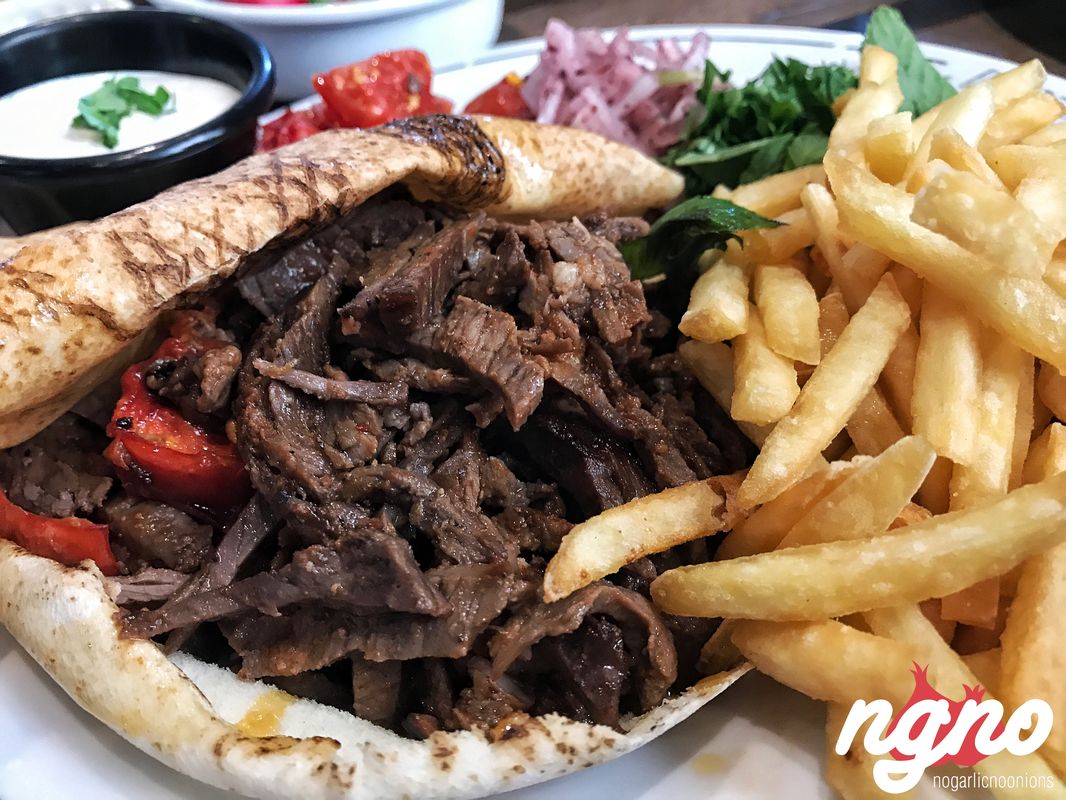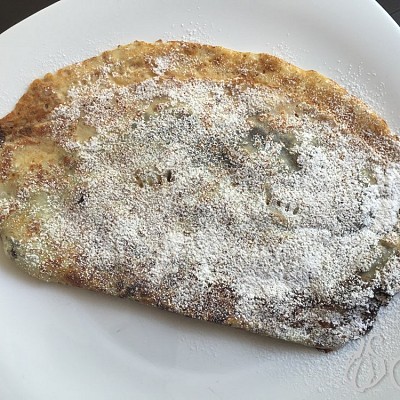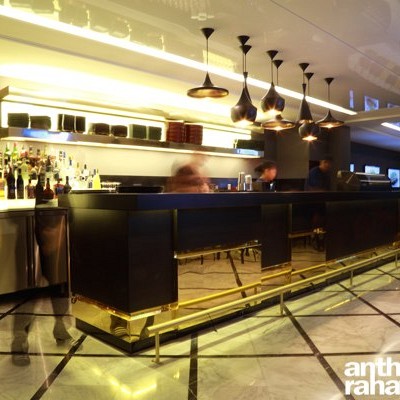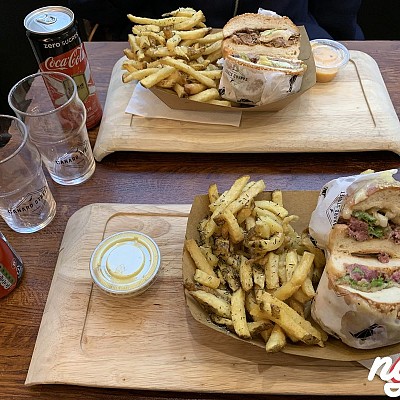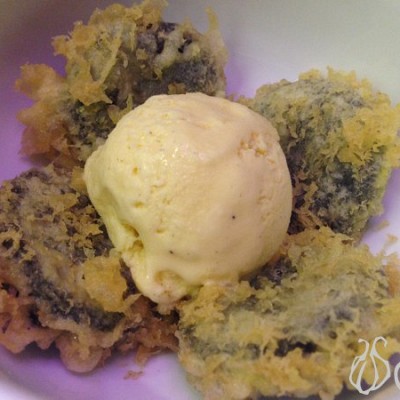Eater: With a complex history bequeathing Ottoman, Syrian, and French influences on its food, Lebanon boasts one of the most exciting dining scenes in the region. Street food is limited in Beirut — you might spot a guy pushing a cart of kaak (a teardrop-shaped bread sprinkled with sesame seeds) or selling ears of boiled corn, but the city’s narrow sidewalks and traffic-clogged streets don’t allow much space for vendors. But whether you’re walking around with just a few American dollars or a few thousand Lebanese lira in your pocket (both are accepted everywhere), there are plenty of options here for stretching your budget. Some local favorites (looking at you, tabbouleh and burgers) can only be found in sit-down restaurants, but it’s easy to fill up for cheap in food-obsessed Beirut.

Manakish
Manakish in the plural, man’oushe if you order just one, Beirut’s most popular snack is made of soft dough similar to pizza, sprinkled with toppings such as herbal za’atar (a wild thyme-sesame blend), local Akkawi cheese, chopped tomatoes, and meat, and always served piping hot. This is Lebanon’s go-to breakfast, sold in bakeries across the city. In most, manakish are prepared in advance and waiting on display under a glass counter, heated to order in a wood-burning oven, then wrapped in a piece of butcher paper to eat on the go. Saj is a close cousin, made with a slightly different bread on a convex griddle, as is lahm bi ajeen, which is prepared with thinner dough and topped with ground lamb or mutton.
There are tiny man’oushe shops everywhere around the city, but even a line in front isn’t a guarantee of quality (more often it’s just an indicator of cheap prices). When just about any man’oushe comes in under $2, there is no need to scrimp, so go for the best. And arrive before 3 p.m. — it might look a bit like pizza, but no one eats manakish for dinner.
Knefeh
For those who prefer their breakfast sweet, knefeh is the dish of choice. Slightly salty cheese oozes out of a semolina cake crunchy with shredded filo and dusted with finely chopped pistachios. Diners douse it all with a glug of sugar syrup perfumed by orange blossom or rose water. Knefeh is a traditional dessert during the month of Ramadan, but it makes for a hearty, sugar-shock breakfast year-round when stuffed into a kaak bread.
Croissants
After 23 years of overseeing Lebanon (1923 to 1946), the French left more than their language behind. Excellent croissants, baguette (called franji in the local dialect), and pain perdu are all widely available in Beirut (not to mention good red wine… but that’s another list).
Falafel
One of the Middle East’s most famous foods, falafel may be made with fava beans or chickpeas — in Lebanon, traditional recipes call for a combination of both. Each shop jealously guards its secret recipe, which definitely involves soaking dried beans then grinding them up with garlic, onions, cumin, coriander, and a little baking soda for levity, and may or may not include parsley, cilantro, or mint. Upon ordering, kitchen staff strew thin pita bread with two or three falafel balls, abundant herbs, fresh tomatoes, and crunchy vegetables, then slather it all with tahini-based tarator sauce and roll it into a sandwich. At most places, you can also order falafel by the half dozen if you’re more in the mood for a snack than a sandwich, with tahini-garlic sauce on the side.
Shawarma
Another Middle Eastern classic, shawarma is spiced lamb or chicken that is spit-roasted, then carved in paper-thin slices into Lebanon’s delicate pita and topped with chopped parsley, onions, and garlic.
Burgers
Sure, locals love traditional Middle Eastern dishes, but everyone loves a juicy beef burger too (just don’t refer to it as a hamburger, or you may get corrected). While burgers aren’t always a bargain in Beirut, there are a few well-priced joints around town.
Fresh Juice
In a land where the weather is warm, fresh fruit is abundant, and since a significant portion of the population doesn’t consume alcohol, fruit juices get elevated to an art form. Minted lemonade is a must, but be sure to also look for pomegranate, strawberry, and avocado, or for jellab, a traditional drink made with carob, dates, grape molasses, and rose water, smoked with Arabic incense, and topped with pine nuts and raisins.
Ice Cream
If visiting Beirut during the summer, an ice cream is de rigueur. Arabic-style ice cream often has mastic added (a tree resin that imparts a taffy-like texture) and may be perfumed with rose or orange-blossom water. European-style ice creams are popular too.
Read the full article on EATER


















